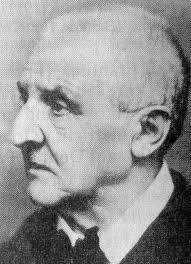September 3, 2018. Bruckner and more. Anton Bruckner was born on September 4th of 1824. We’ve written about several of his early symphonies; this time we’ll focus on the Sixth, which was written between September of 1879 and September of 1881. At that time, Bruckner,  who had lived in Vienna since 1868, was teaching at the Conservatory; he was also on the faculty of the Vienna University, teaching harmony and counterpoint. In addition to teaching, Bruckner was one of the organists in the Hofkapelle, so he hadn’t much time left for composition. Bruckner started working on the Sixth symphony after the period marked by the disastrous first performance of his Third (the one dedicated to Wagner) which he so ineptly conducted. For three years he didn’t write anything new, revising his older compositions (we’ve written about Bruckner’s insecurities and his tendency to revise his own music based on the sometimes uniformed opinion of others many times, for example here). The Sixth isn’t performed very often, clearly not as often as either the Fourth or the last three (Seventh through Ninth). Still, it’s a magnificent work, with most beautiful themes throughout the composition. Sergiu Celibidache was a champion of this work, but in the spirit of the recent centenary, we’ll play it in the performance by the New York Philharmonic under the direction of Leonard Bernstein. The symphony consists of four movements: Majestoso (here); Adagio: Sehr feierlich (Very solemnly), here; Scherzo: Nicht schnell (Not fast) — Trio: Langsam (Slowly), here; and Finale: Bewegt, doch nicht zu schnell (With motion, but not too fast), here.
who had lived in Vienna since 1868, was teaching at the Conservatory; he was also on the faculty of the Vienna University, teaching harmony and counterpoint. In addition to teaching, Bruckner was one of the organists in the Hofkapelle, so he hadn’t much time left for composition. Bruckner started working on the Sixth symphony after the period marked by the disastrous first performance of his Third (the one dedicated to Wagner) which he so ineptly conducted. For three years he didn’t write anything new, revising his older compositions (we’ve written about Bruckner’s insecurities and his tendency to revise his own music based on the sometimes uniformed opinion of others many times, for example here). The Sixth isn’t performed very often, clearly not as often as either the Fourth or the last three (Seventh through Ninth). Still, it’s a magnificent work, with most beautiful themes throughout the composition. Sergiu Celibidache was a champion of this work, but in the spirit of the recent centenary, we’ll play it in the performance by the New York Philharmonic under the direction of Leonard Bernstein. The symphony consists of four movements: Majestoso (here); Adagio: Sehr feierlich (Very solemnly), here; Scherzo: Nicht schnell (Not fast) — Trio: Langsam (Slowly), here; and Finale: Bewegt, doch nicht zu schnell (With motion, but not too fast), here.
We’ve been preoccupied with the Bernstein centenary and have missed several anniversaries. August 31st is the birthday of Itzhak Perlman, one of the greatest violinists of the second half of the 20th century. His technique is probably the best since Jascha Heifetz’s, the tone huge, beautiful and immediately recognizable. Perlman was born in Tel-Aviv; at the age of four he contracted polio, since then he plays while seated. He moved to the US in 1955 to study at the Juilliard with Ivan Galamian and Dorothy DeLay. From the mid-1960s to mid-1980, when his playing was it its peak, he made numerous recordings of extremely high quality. He often collaborated with the pianist Daniel Barenboim and the violinist/violist Pinchas Zukerman (the two, plus Zubin Mehta and Jacquelinedu Pré,- Barenboim’s wife, were close friends), as well as with the pianists Vladimir Ashkenazy and Martha Argerich, the cellist Lynn Harrell and the conductor Seiji Ozawa. Perlman and Azhkenazy recorded all of Beethoven’s violin sonatas in the early 1970s. Here’s the “Spring,” Sonata for piano and violin no. 5 in F Major.
We mentioned Seiji Ozawa – his birthday is also celebrated this week. Ten years older than Perlman, he was born on September 1st of 1935 to Japanese parents in Mukden, in the Chinese province of Manchuria, which was then occupied by the Japanese. The family returned to Japan in 1944. Seiji started playing the piano and only later switched to conducting. He moved to Paris, won several international competitions, and then to the US. After leading several major orchestras, he became the music director of the Boston Symphony in 1973 and led it for 29 years. Even though by the end of his tenure some critics felt that many performances were rather routine, he still could reach great heights: we heard him in Vienna in the late 1990s; he was on tour with the Boston Symphony and conducted Mahler’s Third. It was a sublime event. He was a great champion of the music of the 20th century. In 1990s he recorded all of Mahler symphonies and the reviews were very positive.
| Source: | https://www.classicalconnect.com/node/12703 |
| Website: | Classical Connect |